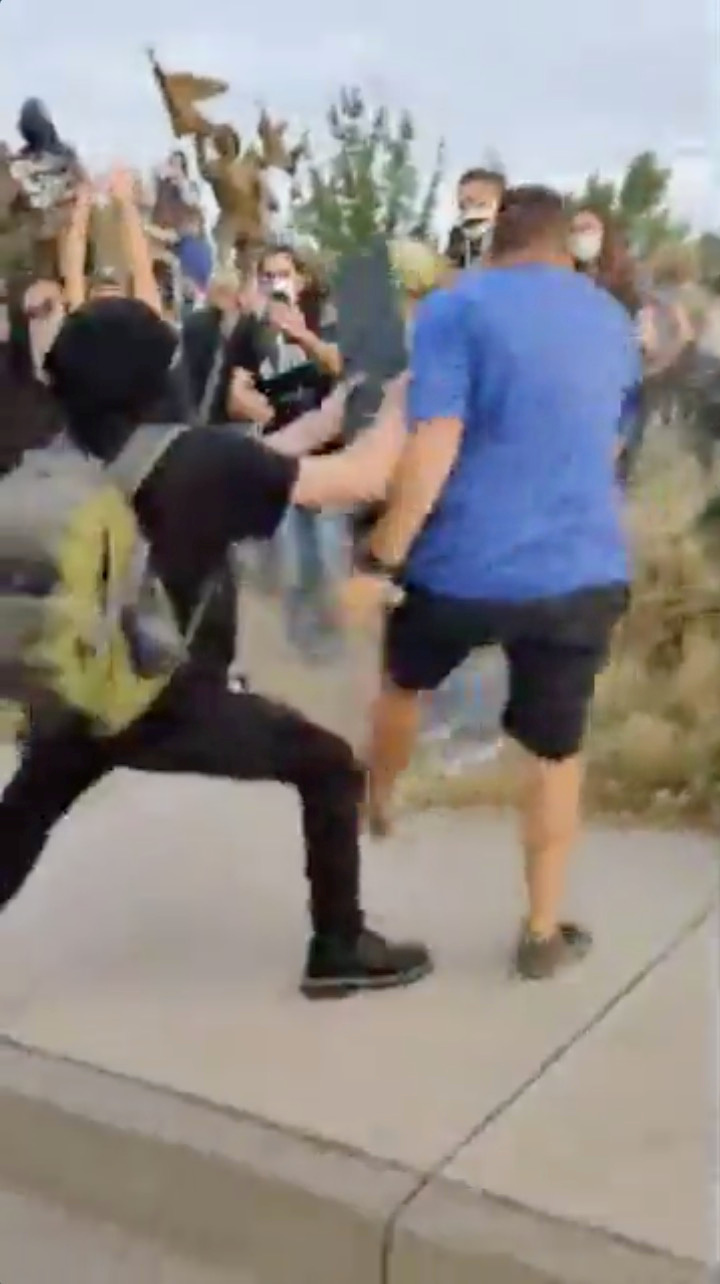
By Brendan O’Brien and Tom Polansek
CHICAGO (Reuters) – Many Chicagoans vehemently oppose President Donald Trump’s pledge to send federal officers to the third-largest U.S. city, after seeing camouflaged agents deployed in Portland club and tear-gas anti-racism protesters.
But in South and West Side neighborhoods hit hardest by a recent spike in gang violence, some Chicago residents welcomed the move and said federal agents may be able to help solve crimes.
“I appreciate it and I like it,” said Cedrick Easterling, a former gang member, who was shoveling garbage scattered in the South Side neighborhood of Englewood as part of his work clearing vacant lots.
“If you sit at that park, you will hear shots all over Englewood,” said Easterling, who was once shot himself, pointing south toward Ogden Park. Like most in Chicago, Easterling is not a fan of Trump, who won just 51 of the city’s 2,069 precincts in the 2016 presidential election.
Easterling, 54, has lived in Englewood since he was seven. He said crime is particularly bad this year and Trump should consider bringing in the National Guard and using drones to record evidence of crimes as they occur
Others were more cautious, saying they feared an increased federal presence would erode civil liberties in a city that has had long-standing problems with police brutality in poor, predominantly Black neighborhoods.
Trump said last week that hundreds of officers from the FBI and other federal agencies would help fight crime in Chicago. The city is suffering a spike in violent crime, including a drive-by shooting by suspected gang members at a funeral last week that wounded 15 people.
Trump has sought to project a law-and-order stance as he seeks re-election on Nov. 3, targeting cities controlled by Democrats who he says are soft on criminals. Critics say the administration is seeking to divert attention from its widely criticized response to the coronavirus pandemic.
Eight of 10 people Reuters interviewed in wealthier and safer areas on Chicago’s North Side opposed any form of intervention from Trump, saying federal officers could fan tensions in the city and would not address underlying issues such as unemployment.
“I don’t see how the feds are going to help with anything,” said Michael Flaherty, a 53-year-old architect who lives in Chicago’s Gold Coast neighborhood.
“They’re violent. Violence doesn’t fix violence.”
The view was often more nuanced on the South and West Sides, where a much higher proportion of residents have experienced violent crime.
Junior Jaber, 28, recalled the day four years ago when his friend Paul Hamilton, then 47, was killed by a stray bullet while walking his dog in Ogden Park.
“I was mad. He had nothing to do with anything,” said Jaber, who runs Englewood Food Mart, where Hamilton worked as a butcher. “We got to do something. It’s almost like a war zone out here.”
Jaber said he was all for it when he learned of Trump’s plan to send in federal agents.
“They should clean it all up. Just do their job,” said the 28-year-old father of two as he sold sodas, lottery tickets and pints of liquor.
U.S. Attorney General William Barr has said the reinforcements to Chicago do not involve the type of forces that were deployed to Portland and have been accused of civil rights violations and using excessive force.
Protesters said uniformed personnel without name tags or agency badges snatched young people off the streets into unmarked vans before eventually releasing them.
Protests have continued around the United States since the May 25 death of George Floyd, a Black man, in Minneapolis police custody. The U.S. Justice Department said on Thursday it would investigate the use of force in Portland and whether federal agents had proper identification.
Black Lives Matter activists, who have led protests against police brutality in Chicago, are suing federal officials to try to ensure agents do not violate civil rights. Chicago Mayor Lori Lightfoot has told residents all new federal resources would be “investigatory in nature” and vowed to pursue all available legal options if federal officers go beyond that.
‘INNOCENT BYSTANDERS’
While Chicago’s murder rate had been falling in recent years, there were 116 murders over the 28 days through July 19, an increase of nearly 200% compared with the same period in 2019, police department data shows.
Some residents of East Garfield Park, a poor neighborhood on Chicago’s West Side, support federal intervention after gang shootings hit unintended targets, said Damien Morris, director of violence prevention initiatives for local nonprofit Breakthrough.
“When you have women and kids getting shot – innocent bystanders – you have residents that feel like something needs to happen,” Morris said.
Trump sent a smaller number of special agents and law enforcement researchers to Chicago in 2017 after a spike in violent crime.
Phil Bridgeman, 49, said he opposes all federal law enforcement in Chicago. Even if the federal agents could help solve high-profile cases, he said, they will not solve the root causes of violent crime.
“It’s not going to help, it’s going to agitate,” said Bridgeman as he sold “Black Lives Matter” T-shirts in the middle of a busy boulevard.
Vaughn Bryant, executive director of anti-violence group Metropolitan Peace Initiatives, was concerned by “a greater threat to people’s freedom,” with the arrival of more agents.
In Englewood, a man who goes by the name Joe Pug sat in a lawn chair with several other people on a sidewalk opposite a small police station. The 49-year-old, who has lived in the neighborhood for most of his life, supports federal agents investigating shootings.
He said the South and West Sides also need massive investments in education and job creation, especially for young Black men.
“There is nothing here, nothing for them,” he said.
(Reporting by Brendan O’Brien and Tom Polansek in Chicago; Editing by Caroline Stauffer and Daniel Wallis)












